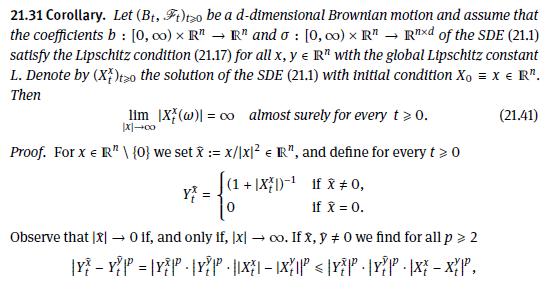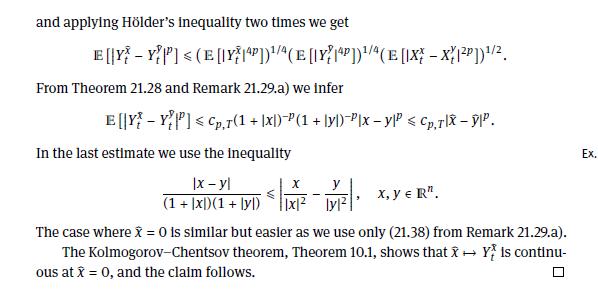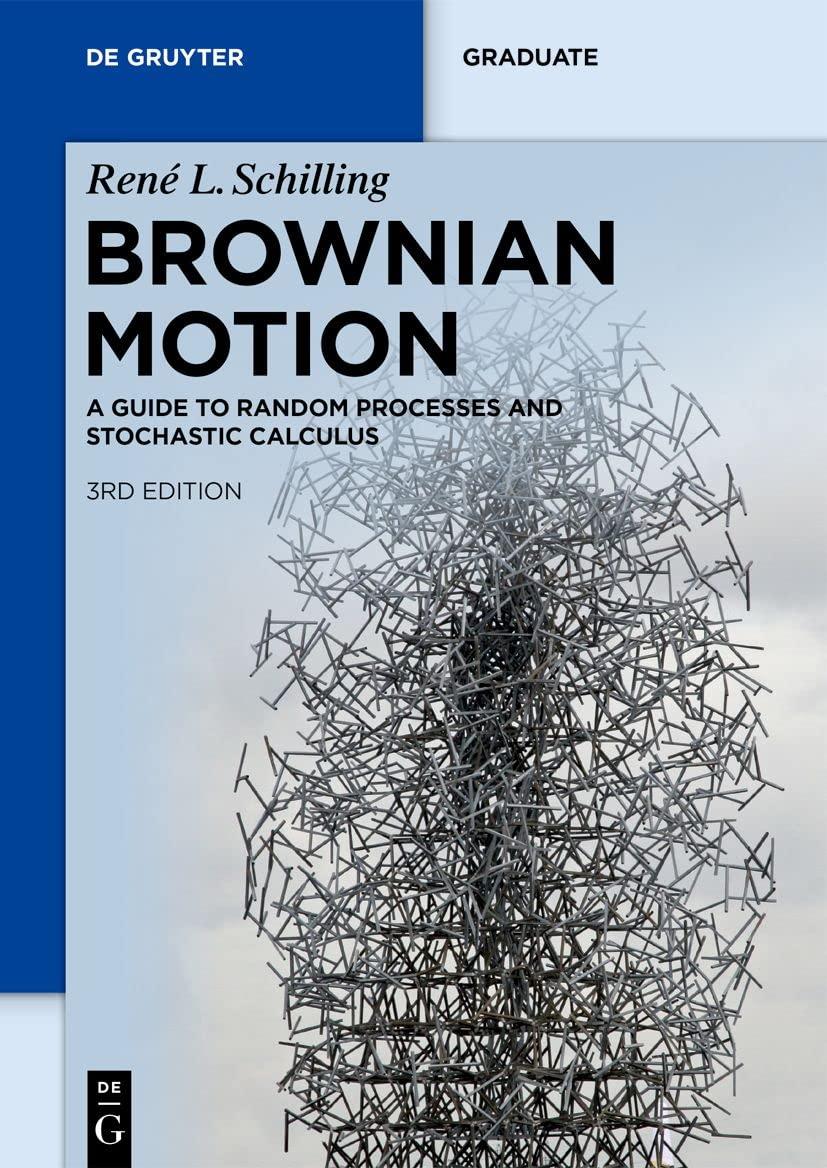Let (left(B_{t} ight)_{t geqslant 0}) be a (mathrm{BM}^{1}) and (b(x), sigma(x)) autonomous and globally Lipschitz continuous coefficients.
Question:
Let \(\left(B_{t}\right)_{t \geqslant 0}\) be a \(\mathrm{BM}^{1}\) and \(b(x), \sigma(x)\) autonomous and globally Lipschitz continuous coefficients. We have seen in Corollary 21.24 that the solution of the stochastic differential equation \(d X_{t}=b\left(X_{t}\right) d t+\sigma\left(X_{t}\right) d B_{t}\) is a Markov process. Recall that \(\mathcal{C}_{b}(\mathbb{R})\) and \(\mathcal{C}_{\infty}(\mathbb{R})\) are the bounded continuous functions and the continuous functions vanishing at infinity.
a) Find the transition semigroup \(T_{t}\) of this Markov process and show that \(T_{t}\) maps \(\mathcal{C}_{b}(\mathbb{R})\) into itself.
b) Use Corollary 21.31 to show that \(T_{t}\) maps \(\mathcal{C}_{\infty}(\mathbb{R})\) into itself.
c) Find the infinitesimal generator \(A\) of \(T_{t}\) on \(\mathcal{C}_{c}^{2}(\mathbb{R})\). Show that \(A\) has an extension onto \(\mathcal{C}_{b}^{2}(\mathbb{R})\).
Use Itô's formula.
d) Prove the following generalization of Dynkin's formula: if \(b, \sigma\) are bounded and if \(\tau\) is a stopping time with \(\mathbb{E}^{x} \tau)\right]-u(0, x)=\mathbb{E}^{x}\left[\int_{0}^{\tau}\left(\partial_{t} u\left(s, X_{s}\right)+A_{x} u\left(s, X_{s}\right)\right) d s\right] .\]
Data From 21.31 Corollary


Step by Step Answer:

Brownian Motion A Guide To Random Processes And Stochastic Calculus De Gruyter Textbook
ISBN: 9783110741254
3rd Edition
Authors: René L. Schilling, Björn Böttcher





